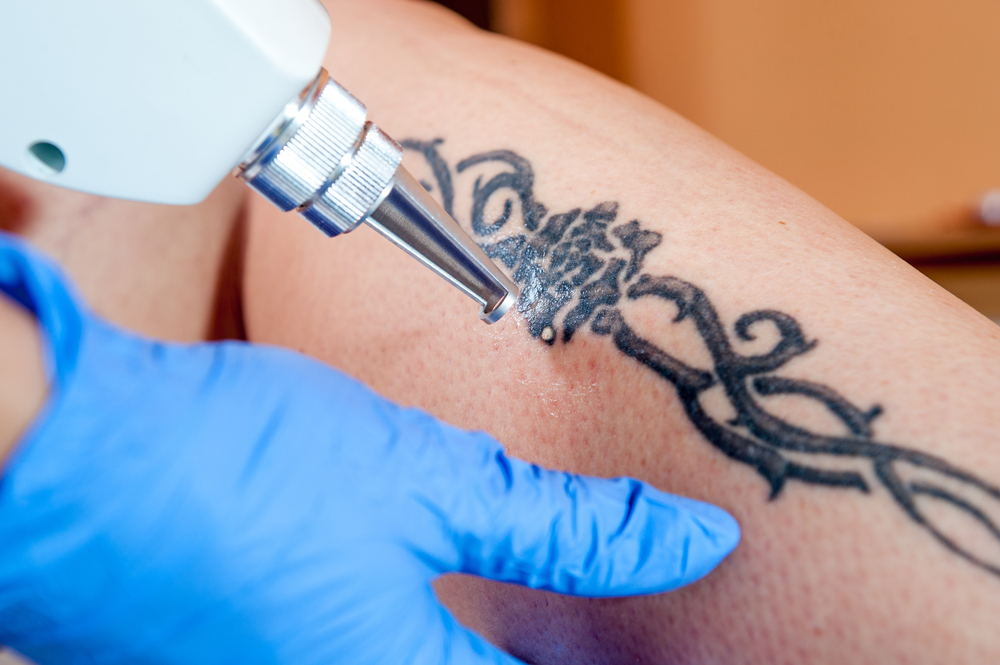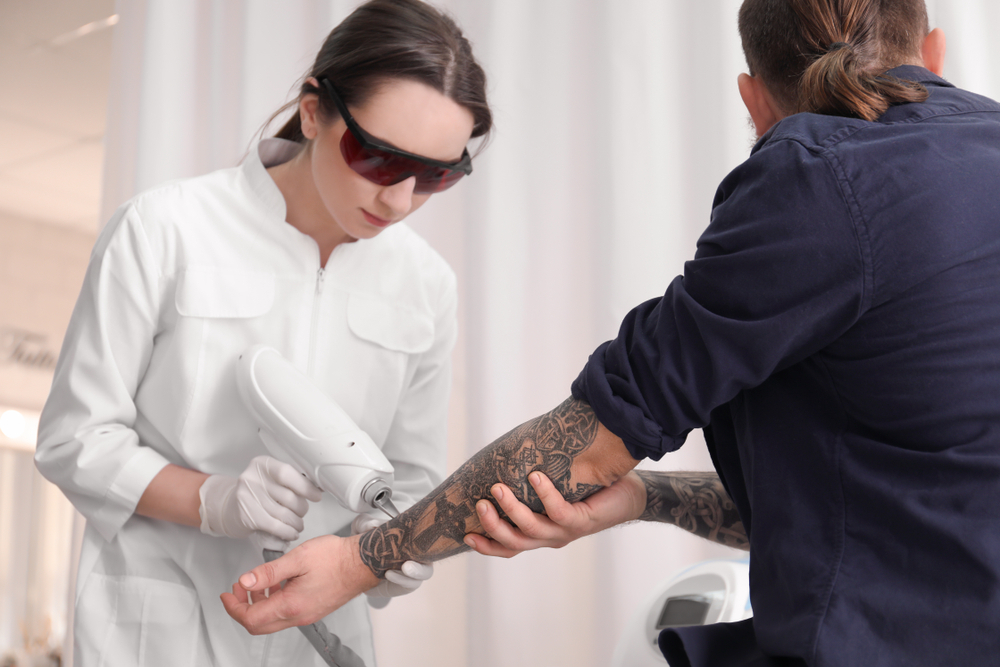The name of the ex on your arm, the tramp stamp that you are embarrassed about – some tattoos you want to get rid of urgently. But how? We answer the most important questions.
What is the most common method to remove a tattoo?
Usually, tattoos are removed with laser treatment. Best suited are so-called Q-switched ruby lasers or Nd-Yag lasers. The treatment has few side effects, is not very painful and achieves good results with most tattoos.
How does a laser treatment work?

When tattooing, color particles are embedded in the skin. These are so large that the body can not break them down. In the laser action is now a few billionths of a second an extremely high-energy flash of light on the skin shot. Because the light only hits the tissue for such a short time, it remains unharmed. The color balls, however, are shattered into small fragments that can be transported away via the lymphatic fluid.
Once the body has removed the remains of the paint in this way, particles deeper in the skin are brought to the surface and can now be reached by the laser. Thus the tattoo disappears bit by bit.
Which tattoos can be removed best?
If you are already thinking about how to get it off later when choosing the tattoo, you should stay away from it. Tattoos are a life-long decision, and removal is always tedious and expensive – and success is by no means guaranteed. A 95 percent elimination is possible in most cases.
Laser treatment achieves the best results with the colors black and blue. White and yellow are particularly difficult to remove. “Color changes can occur here when using lasers,” says dermatologist Klaus Fritz, Vice President of the European Society for Laser Dermatology.
How long does it take to remove a tattoo?

Several laser treatments are required to remove a tattoo. How many depends on the number of colors in the tattoo, its size and color density. Non-professional tattoos are quicker and easier to remove than professional tattoos. They usually go away after three to six sessions. For professional tattoos you need to laser ten times or more.
The skin needs weeks between two sessions to recover – Klaus Fritz recommends a regeneration break of three months. “Don’t put yourself under time pressure! We can’t shoot it every three weeks, it irritates the skin to form scars.” With four sessions a year, it can take several years for a tattoo to be completely eliminated.
What does tattoo removal cost?
A session costs between 200 and 500 USD, depending on its duration. The health insurance companies do not cover the costs, because the removal of a tattoo is not a medically necessary procedure. Getting rid of a professional tattoo therefore costs at least $500, depending on size and color also considerably more.
Caution with offerers, who promise too clearly more favorable prices: It is quite possible that they use technically inferior equipment – the result will be correspondingly worse.
Does the laser hurt?
In general, laser treatment hurts less than tattooing itself. “It feels like little pinpricks,” says dermatologist Fritz. Pain-sensitive patients can be helped by a painkiller or local anesthetic. After the treatment, the skin is irritated, similar to sunburn. In this case, cooling helps.
After one session the skin is irritated. Therefore: wash and dab carefully, swimming and sauna are taboo. “Act as if you have a graze,” advises Fritz. In the first few days after the treatment the skin may redden, sometimes blisters appear. Scabs form on the skin, which must not be scratched off under any circumstances. After a certain time it falls off, after that the skin can be reddened for several weeks.
During this time the skin is very sensitive and must not be exposed to too much sun. It is best to wear clothing that covers the affected areas and protect the skin with sun cream with an extremely high sun protection factor.
What are the possible side effects?
The treated skin area may temporarily darken. Very rarely it can happen that the skin in the formerly tattooed area becomes a little lighter than before. Some color pigments change color during laser treatment instead of disappearing.
Especially when lasering a failed permanent make-up, it happens in individual cases that lip contours become darker or eyelid lines become colored. “You should therefore ask the studio to pigment a small point of the same color in an inconspicuous place, such as under the arm,” advises Fritz. At this point the dermatologist can try out whether the color changes.
In rare cases allergic reactions may occur. If the scab is scraped off or if the treated area becomes inflamed, scars may appear. Self-discipline and antibacterial ointments help against these dangers.
Who offers the laser treatment?
Laser treatment is offered in dermatological practices, tattoo studios and, more recently, even in tanning salons. “Let the dermatologist do it,” advises Klaus Fritz. He has the necessary experience if, for example, a mole is hidden under the tattoo.
“You may also need an antibiotic cream for aftercare. You can’t get it at the studio, it has to be prescribed.” In addition, liability insurances would only cover trained laser operators.
Are there other ways to get rid of a tattoo?
Anyone who generally likes tattoos but is no longer satisfied with their motif can have a “cover-up” done. A new picture is tattooed over the old one – this is also possible after a part of the motif has been removed with the help of laser treatment, for example the name of the ex-person.
In addition to lasers, there are other methods such as diathermy, waterjet cutting or magnetic treatment. However, they are not fully developed and are rarely offered. It is also possible to simply cut out small tattoos. It can be done quickly and makes every tattoo disappear, but it always leaves a scar. The previously common dermabrasion, the grinding of the skin, is no longer common because it is time-consuming, often leaving scars and tattoos are not always completely removed.

